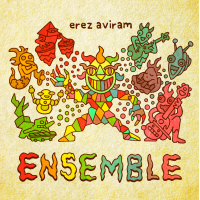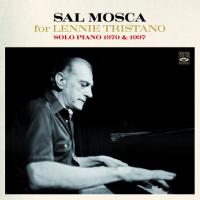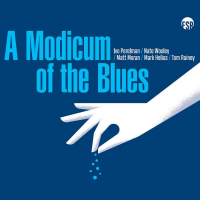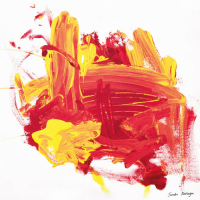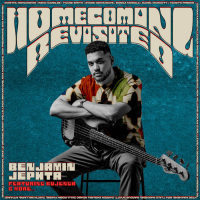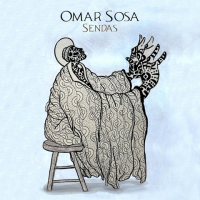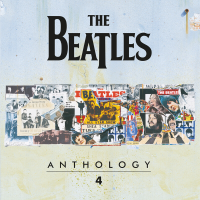Home » Jazz Articles » Extended Analysis » Matthew Halsall & the Gondwana Orchestra: Matthew Halsal...
Matthew Halsall & the Gondwana Orchestra: Matthew Halsall & the Gondwana Orchestra: When the World Was One
Credited to Halsall and the Gondwana Orchestra there is a feeling of expansion of the musical palette, further steps on a satisfying journey towards the destination identified on 2012's transitional Fletcher Moss Park. That earlier record showed the way that Halsall was looking to evolve and shift his musical path—it began with pieces recorded in 2010 around the time of the Gilles Peterson Worldwide award winning On the Go, took in a couple of piano and bass-less tracks from a more experimental July 2011 session and ended up with a couple of tracks recorded in April 2012 by something broadly resembling the line-up for When the World Was One.
Careful study of the credits helps here—Halsall has said that he writes for the strengths of the musicians he works with, so the selection of the band for a session is a strong indicator of his intended direction. First thing to notice is that the pieces on this album were, like the final two tracks of Fletcher Moss Park, also recorded in April 2012. Secondly the line-up is broadly the same—so Taz Modi on piano, flautist Lisa Mallett and drummer Luke Flowers of Cinematic Orchestra fame continue and are augmented by Keiko Kitamura on Japanese koto. There are also welcome returns for Halsall regulars such as the inestimable Nat Birchall and Rachael Gladwin, both surprisingly present on just 3 of the 7 tracks on Fletcher Moss Park, and of course Gavin Barras on bass who like Birchall has appeared on at least one track on each Halsall album since his 2008 debut 'Sending My Love.'
The presence of so many Halsall regulars is important in anchoring the core sound of the album in the blend of modal and spiritual jazz that Halsall has developed over these last seven years or so. There are key differences though, that tracks like "Patterns" illustrate well—the harp and flute in particular buzz around the modal lines of Birchall's sax augmenting and emphasising key points and phrases. Halsall's solo here is also worthy of note, feeling like he is meditating on the music around him—describing what he observes as it passes through and by him. If the feel on this and title track "When the World Was One" allude to the swing of "Favourite Things" or "Greensleeves" era John Coltrane then it is the juxtaposition of elements from the later spiritual jazz explorations of Alice Coltrane that take the music further to a different place. It makes for an intriguing listen as while Modi's piano on these pieces has something of the pulsing power of McCoy Tyner, alongside Rachael Gladwin's harp it introduces the feel of Alice Coltrane in the same version of Coltrane's band as Tyner, a route the great man chose not to take. The wonderful, well judged, "Tribute to Alice Coltrane" that closes the collection confirms the inspiration and allows Halsall to build his expressive solo upon Barras' wonderfully measured bass line, revealing a depth of feeling and thought in every phrase of its calm, walking pace tempo.
Another key theme is the impact of travel in Japan, and specifically Kyoto, on Halsall—both "Kiyomizu-Dera"'s gentle beauty inspired by the famous temple, and "Sagano Bamboo Forest" indicate a direct personal inspiration. Indeed the latter is interesting in the way that it begins with Modi's Tyner-esque piano lines, overlaid with Birchall's other worldly Eastern influenced alto work but develops into something rather more understated following the introduction of Keiko Kitamura on koto in the second half. The way that diverse influences such as these are woven together into the modal jazz framework while maintaining that distinctive sense of acoustic space and melody works fantastically well—assimilating the new and the old to forge a new yet recognisable route that Halsall may choose to explore further in the future.
There is also a careful attention to the detail of both the music and the package by which it is presented to the listener here. The sleeve with its calming orange Op Art square design signals both change from the monochrome, sixties Blue Note inspired, sleeves of earlier Halsall albums but also by being the first Halsall record to not feature the band leader himself anywhere on the cover or CD booklet. It is also clear that thought has been given to the construction of a thematically consistent listening experience that demonstrates a clear progression from earlier work. One might even argue that the quality control has gone too far—given that these pieces are already two years old on release what other gems languish unreleased in the Gondwana vaults?
Nevertheless what we have here is one of the finest British jazz records of the modern era, one that manages to combine the serious and spiritual within a warm, melodic and welcoming musical context. To take a musical journey such as this on a major label would be fantastic, to do it on a small independent label is near miraculous. Unreservedly recommended.
Track Listing
1. When the World Was One; 2. A Far Away Place; 3. Falling Water; 4. Patterns; 5. Kiyomizu-Dera; 6. Sagano Bamboo Forest; 7. Tribute to Alice Coltrane.
Personnel
Matthew Halsall
trumpetMatthew Halsall: trumpet; Nat Birchall: saxophone; Lisa Mallett: flute; Keiko Kitamura: koto; Rachael Gladwin: harp; Taz Modi: piano; Gavin Barras: bass; Luke Flowers: drums.
Album information
Title: Matthew Halsall & the Gondwana Orchestra: When the World Was One | Year Released: 2014 | Record Label: Gondwana Records
Tags
PREVIOUS / NEXT
Support All About Jazz
 All About Jazz has been a pillar of jazz since 1995, championing it as an art form and, more importantly, supporting the musicians who make it. Our enduring commitment has made "AAJ" one of the most culturally important websites of its kind, read by hundreds of thousands of fans, musicians and industry figures every month.
All About Jazz has been a pillar of jazz since 1995, championing it as an art form and, more importantly, supporting the musicians who make it. Our enduring commitment has made "AAJ" one of the most culturally important websites of its kind, read by hundreds of thousands of fans, musicians and industry figures every month.














